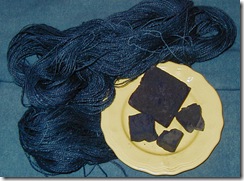synthetic indigo factories
The Rise and Impact of Synthetic Indigo Factories
In the world of textiles, indigo dye has played a crucial role, transforming the color of fabrics for centuries. Historically derived from natural plants like Indigofera tinctoria, the dyeing process was labor-intensive and often limited by availability. However, the advent of synthetic indigo production has revolutionized the industry, bringing forth both unprecedented benefits and challenges.
Synthetic indigo was first developed in the late 19th century, primarily by German chemists who synthesized the compound from aniline, a derivative of coal tar. This breakthrough enabled large-scale production, drastically reducing costs and making indigo more accessible to manufacturers around the globe. With synthetic alternatives flooding the market, traditional indigo production has significantly declined, fundamentally changing the dynamics of the dye industry.
One of the major advantages of synthetic indigo is its consistency in color and quality. Natural indigo can vary greatly depending on the crop's growing conditions, soil, and processing methods. In contrast, synthetic indigo offers a standardized product that meets the demands of modern textile manufacturing. This reliability has led to its widespread adoption in the denim industry, where uniformity in color is paramount for brands striving to maintain their reputation for quality.
synthetic indigo factories

Moreover, synthetic indigo production is less reliant on agricultural cycles. As synthetic dyes can be produced in a controlled environment, manufacturers can meet global demand regardless of weather conditions or crop failures. This reliability is particularly important in today’s fast-fashion landscape, where speed and efficiency are essential for maintaining market competitiveness.
However, the rise of synthetic indigo factories is not without its downsides. The production process often involves the use of toxic chemicals and can generate significant environmental pollution, particularly if waste is not managed properly. Concerns about water pollution, particularly in regions where these factories are concentrated, have sparked debates about sustainable practices in the dye industry. Many synthetic dye manufacturers are now under pressure to adopt greener technologies and processes, leading to innovations aimed at reducing harmful emissions and improving waste management.
Furthermore, the transition from natural to synthetic dyes has cultural implications. Many communities that rely on traditional indigo cultivation for their livelihoods have experienced economic hardships as synthetic alternatives dominate the market. This shift raises questions about the preservation of cultural heritage in textile dyeing practices, highlighting the need for a balance between modernization and tradition.
In conclusion, synthetic indigo factories represent a significant shift in the textile industry, transforming how fabrics are dyed while offering both benefits and challenges. While the accessibility and consistency of synthetic indigo have propelled the fashion industry forward, the environmental and cultural impacts must be carefully managed. As the conversation around sustainability continues, the future of indigo dyeing may lie in finding a harmonious balance between synthetic and traditional methods, ensuring that progress does not come at the expense of our planet or our cultural heritage.
-
The Timeless Art of Denim Indigo Dye
NewsJul.01,2025
-
The Rise of Sulfur Dyed Denim
NewsJul.01,2025
-
The Rich Revival of the Best Indigo Dye
NewsJul.01,2025
-
The Enduring Strength of Sulphur Black
NewsJul.01,2025
-
The Ancient Art of Chinese Indigo Dye
NewsJul.01,2025
-
Industry Power of Indigo
NewsJul.01,2025
-
Black Sulfur is Leading the Next Wave
NewsJul.01,2025

Sulphur Black
1.Name: sulphur black; Sulfur Black; Sulphur Black 1;
2.Structure formula:
3.Molecule formula: C6H4N2O5
4.CAS No.: 1326-82-5
5.HS code: 32041911
6.Product specification:Appearance:black phosphorus flakes; black liquid

Bromo Indigo; Vat Bromo-Indigo; C.I.Vat Blue 5
1.Name: Bromo indigo; Vat bromo-indigo; C.I.Vat blue 5;
2.Structure formula:
3.Molecule formula: C16H6Br4N2O2
4.CAS No.: 2475-31-2
5.HS code: 3204151000 6.Major usage and instruction: Be mainly used to dye cotton fabrics.

Indigo Blue Vat Blue
1.Name: indigo blue,vat blue 1,
2.Structure formula:
3.Molecule formula: C16H10N2O2
4.. CAS No.: 482-89-3
5.Molecule weight: 262.62
6.HS code: 3204151000
7.Major usage and instruction: Be mainly used to dye cotton fabrics.

